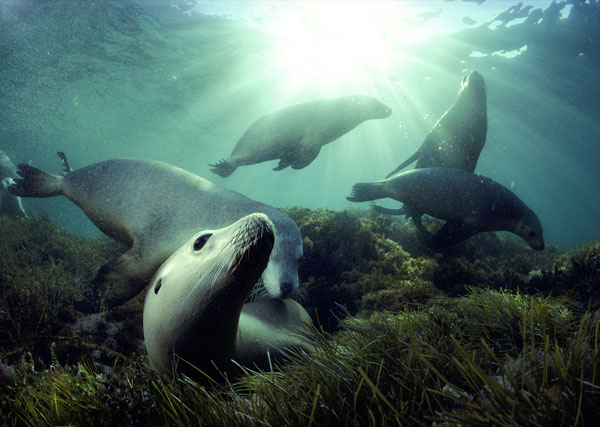Discovering the sea lion's secret of deep hunting
The results of a study by American scientists published in the journal Royal Society Biology Letters on Sept. 19 have revealed the secret of explaining factors that help sea lions dive into great depths to hunt without being stroke due to reduced air pressure.
Considered a debilitating disease due to air pressure, the phenomenon of compressed air occurs when nitrogen gas is compressed in the blood during the deep diving of "emerging" ocean creatures during swimming, causing phenomena. Pain even died.
The group of scientists led by Birgitte McDonald at Scripps Institution of Oceanography captured an adult California lion (Zalophus californianus), then anesthetized and attached a device to record the pressure index of oxygen in the cave. the host, the time and depth of this creature when it is released into the sea.

Radio equipment showed that this 82kg sea lion had gone through 48 dive steps, each lasting about 6 minutes. At a depth of about 225m, a significant reduction in the sea lion's oxygen pressure appears. This raises the possibility that the animal has collected its collapsed lung to prevent additional gas (nitrogen) from entering the blood.
The researchers said that the lung collapse collection in diving mammals is a natural mechanism in the air-handling alveoli with an elastic ball-like structure, attached to the hollowed bronchi to reduce size. size of this agency.
The signal shows that the sea lion continues to dive to a depth of about 300m and starts swimming upwards. When swimming up to about 247m above the water surface, the oxygen pressure increased, indicating that its lungs had re-inflated, then collapsed gently until the sea lion approached the water.
Scientists have questioned whether sea lions have collapsed their lungs to retain their valuable gas reserves in order to survive the swim. The answer is upper airways - including the large bronchi and trachea of this animal whose tissues cannot air into the blood.
During the swimming phase, the sea lion uses this air bag to feed the alveoli, which is why it can still survive in a severe lack of oxygen.
- Video: A close-up of the horrifying battle of lions
- Zambia issued a ban on hunting newspapers and lions
- Why do lions prefer to hunt porcupines whether they can be hurt or die of porcupine?
- Video: Lion bites and kills two leopards
- Lions can become extinct because of lack of food
- Crocodiles are torn by lions because they dare to loot their lures
- Beam of photos: Lion life
- The war between lions and buffaloes
- Not only rhinos and tigers, African lions will soon disappear
- Use robots to maintain wild habits for lions
- Revealing 'secret weapon' to hunt NASA's new planet
- Baby elephants stray into good prey for lions
 Surprised: Fish that live in the dark ocean still see colors
Surprised: Fish that live in the dark ocean still see colors Japan suddenly caught the creature that caused the earthquake in the legend
Japan suddenly caught the creature that caused the earthquake in the legend A series of gray whale carcasses washed ashore on California's coast
A series of gray whale carcasses washed ashore on California's coast Compare the size of shark species in the world
Compare the size of shark species in the world